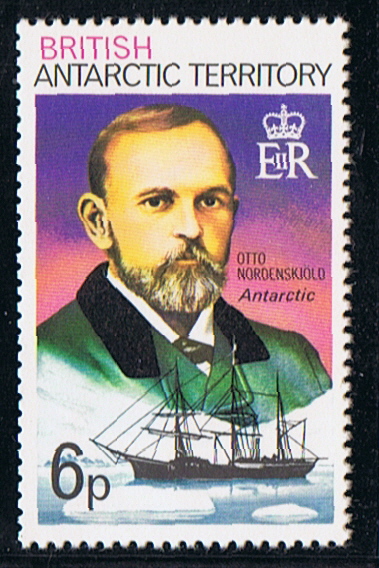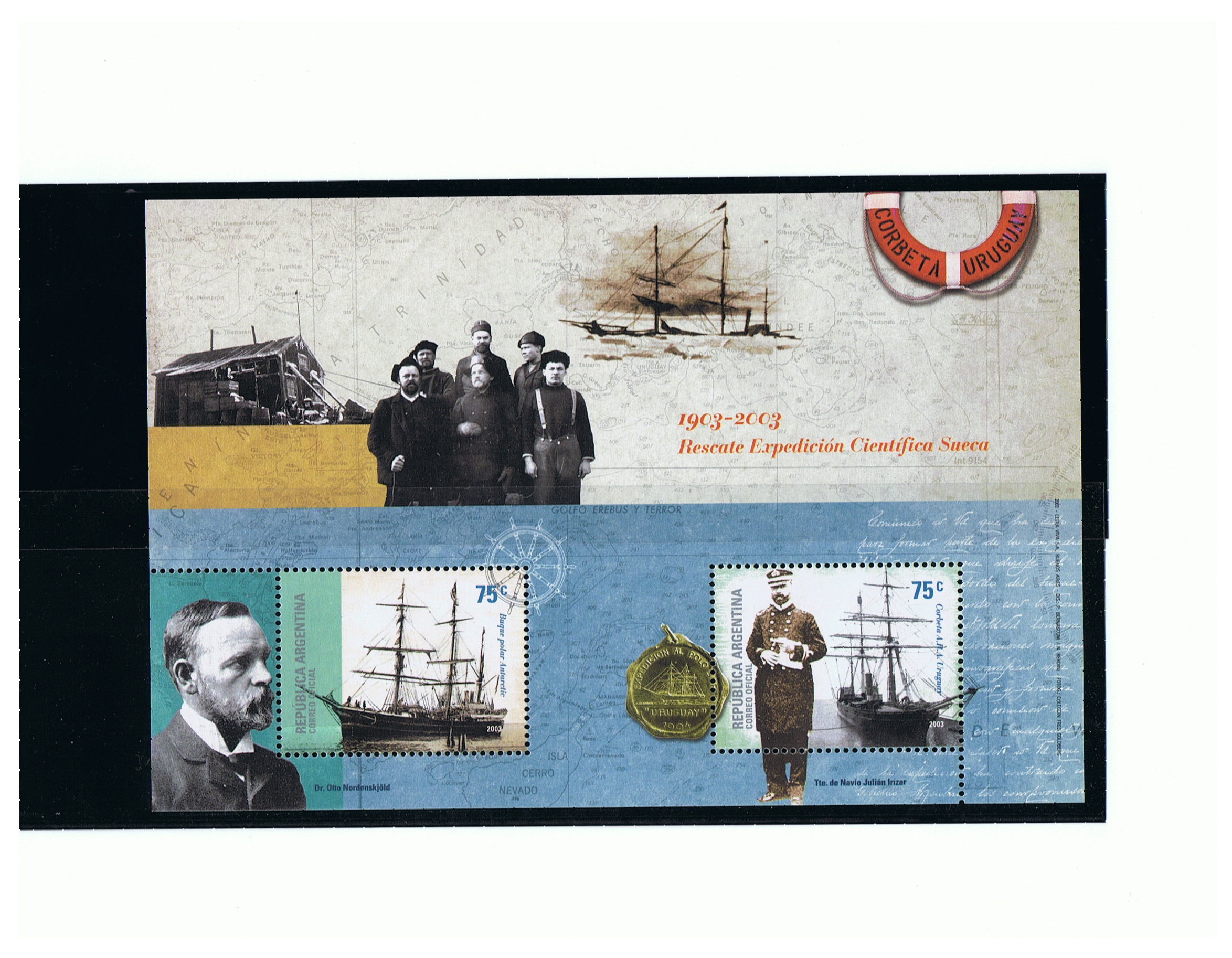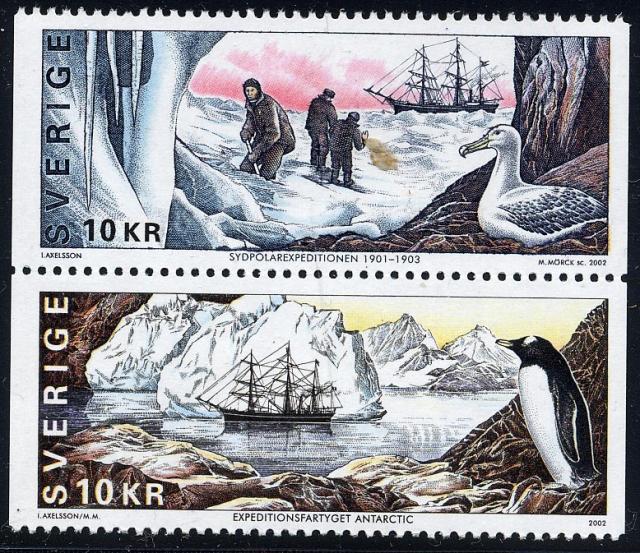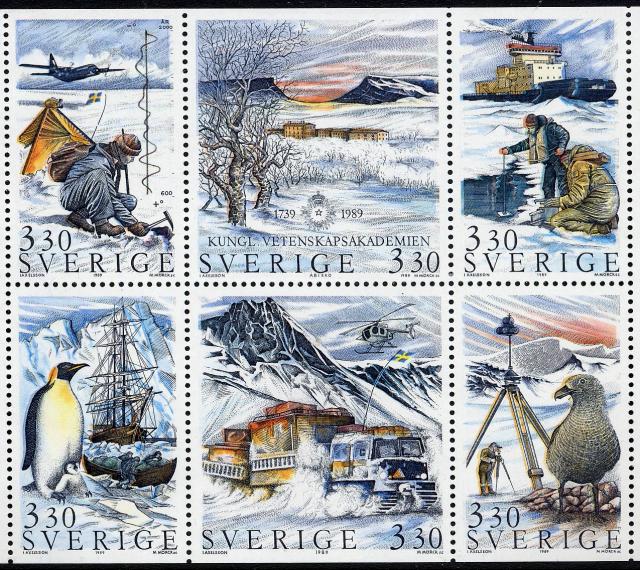



Built as a whaler by J Jørgensen, Drammen, Norway most probably for Svend Foyn, anyhow he was the owner when she was used for the Bull expedition.
Launched under the name CAP NOR.
Tonnage 226 tons, dim. 136 x 29.2 x 15ft. (draught)
She was a three-masted auxiliary steam vessel.
1871 delivered to owners.
1893 Hendrik. John. Bull from Norway got the financial backing from Svend Foyn the inventor of the harpoon gun, for a commercial and exploratory voyage to the Antarctic. At that time the CAP NOR was laid up in Sandefjord. He got this vessel from Foyn and she was renamed ANTARCTIC.
September 1893 under command of Capt. Leonard Kristensen she sailed from Sandefjord.
After a call in Melbourne, she headed south, the first summer she was used as a sealer and whaler but she became trapped in the ice for three weeks before she got free and came in the open waters of the Ross Sea.
Sealing was good but not any right whale was caught, only on the return voyage she harpooned one whale in the vicinity of Campbell Island in June 1894. The first whale caught by Norwegians in the Southern Ocean. They set foot on land at Cape Adare, South Victoria Land.
The ANTARCTIC arrived home in 1895 but the expedition was a financial disaster, the loss on the voyage was around 10.000 kroner.
Due to this not a new expedition sailed out from Norway in search for the whales in the far south.
When Baron N Otto G Nordenskjöld planned his Swedish Scientific Expedition to the Antarctic, he bought the ANTARCTIC and fitted her out for a voyage to the Antarctic.
Nordenskjöld wanted Captain Carl Anton Larsen an experienced leader of the JASON expedition as captain of the ANTARCTIC, and he was offered 5.000 kroner to take the position.
Larsen accepted and on 16 October 1901 the ANTARCTIC under his command sailed from Göteborg and before heading south made a call at Sandefjord on 19 October.
When she sailed from Sandefjord the ANTARCTIC did have a crew of 21 men included Larsen and four Swedish scientists, overall command of the expedition did have Nordenskjöld.
21 December 1901the ANTARCTIC arrived at Buenos Aires where Lieutenant José Maria Sobral of the Argentine Navy joined the expedition.
11 January 1902 the South Shetland Islands were sighted, they tried to sail beyond 66 10 South, in the pack ice of the Weddell Sea. But due to the ice condition it was a failure, and a decision was made to make a winter camp on Snow Hill Island. A hut was built and stores landed by 22 February. Then the ANTARCTIC left leaving behind Nordenskjöld, the Argentine Lieutenant Sobral and four crew members, dogs and other equipment. They had stores for two winters in case the ANTARCTIC could not reach them the next summer.
The ANTARCTIC sailed to Ushuaia, Argentine, arrived there 04 March, Larsen with the help of the Argentinean Government stored and bunkered the vessel, thereafter the ANTARCTIC sailed to the Falkland Islands, from where she left on the 11 April.
22 April the ANTARCTIC anchored in Jason Harbour in West Cumberland, then she sailed to Royal Bay before heading back to West Cumberland Bay, a camp at Maiviken was established, were some of the scientist were left behind for survey and reconnaissance work.
14 May the ANTARCTIC sailed into Grytviken, where she remained till the expedition left the island on 15 June.
The ANTARCTIC headed for the Falkland Islands for a short call before sailing to Ushuaia for provision and coal.
05 November she left this port and returned to the winter camp on Snow Hill, but hindered by a 300 km wide belt of ice their process was very slowly.
After passing the ice belt she surveyed Astrolabe Island but ice conditions were worsening.
29 December three men were landed on Joinville Island with the intention to reach the Nordenskjöld camp overland, while Larsen tried to find a way trough the ice with the ANTARCTIC to the camp on Snow Hill.
When the three men would reach Snow Hill before the ANTARCTIC had arrived, they were instructed to return to Joinville Island with the men from the camp, and the ANTARCTIC would later pick up all this men from the camp.
But the three men expedition under command of J Gunnar got not far, hindered by soft ice, which they could not cross by sledge, they returned to Joinville Island and had to wait for the return of the ANTARCTIC.
But the ANTARCTIC did not return, she herself was on 9 January 1903 entrenched in the pack ice.
Worsening the situation was a pressure ridge of ice building up against the vessel, splintering the hull below the waterline and pushing her over. She got a large hole in the hull, which was not possible to repair, a damaged rudder, a keel who was ripped off; the 20 men crew did everything to save her but till no avail.
12 February they had to abandon the vessel, after taking off food, equipment, scientific records and collections, about 12.45 that day the ANTARCTIC disappeared below the pack ice.
After a 16 day trip over the ice with much hardship the 20 men party reached Paulet Island, adjoining Joinville Island. The expedition was now divided in three groups, and winter was nearing.
The three men on Joinville Island built a shelter they killed 700 penguins for food, and wintered there.
Larsens and his 19 men built a stone house, and there she spent the winter. On 7 June 1903 the seaman Ole K. Wennersgaard died there, but the other survived well on rations supplemented with penguin, seal meat and fish.
When in the autumn of 1903 the ANTARCTIC did not return in Argentine, people became worried, and in Sweden the whaler FRITHJOF sailed out to the Antarctic, with the instructions to look for the missing expedition. In Argentine the corvette ARA URUGUAY was converted to a polar vessel, and she sailed out from Buenos Aires on 08 October, under command of D. Juliá Irizar and a crew of 22 men.
The plan was to wait for the FRITHJOF, and then both ships would sail to the Antarctic, but she was delayed during the voyage, and on 01 November Irizar decided not to wait any longer and headed south.
The ice situation the season 2003/04 was not so worse, and the ARA URUGUAY had a relatively easy passage to the Antarctic Peninsula, she reached 6 November a position off Seymour Island. The ARA URUGUAY with an iron hull did not have much protection against the ice. 08 November she reached Snow Hill.
31 October Larsen with 5 men set out to reach the 3 men on Joinville Island but there he found a note that the 3 men had left for the Snow Hill camp.
Larsen pushed then through to Snow Hill camp, which he reached a few hours after the ARA URUGUAY, reached the camp.
The three groups boarded the corvette on 09 November, and after picking up the remainder of Larsen's group on Paulet Island on 10 November, the ARA URUGUAY headed north, and arrived in Buenos Aires on 02 December 1903 to a tumultuous welcome, and with a large collection of scientific and topographical information.
The expedition members sailed from Buenos Aires on TIJUCA which left port on 10 December, and she arrived at Stockholm on 10 January 1904.
British Antarctic Territory 1973 6p sg 52, scott 53
Falkland Islands Dependencies 1954 10s sg G39, scott 1L32
Sweden 1999 3k30 sg 1466, scott 1752.
Sweden 2002 four stamps of 10Kr sg?, scott?
Argentine 2003 75c and most probably also the vessel in the margin of the MS, sg?, scott?
Sources: Pesca A History of the Pioneer Modern Whaling Company in the Antarctic by Ian B Hart.
http://www.bjerrang.no/aq
